Picture it: a woman sitting with her face in perfect profile, skin bright against the background. Her dress is huge—voluminous skirts trimmed with thick bands of lace. She has bracelets on each wrist and hair partially pinned up, one ringlet trailing down her neck. Behind her sits a child, his face blurred and ghostly mid-motion. But the most intriguing aspect of the image is one of its smallest components: the small hand-mirror this woman wields. It’s oval-shaped, holding a partial reflection of her face—eyes, nose, the top of her lips. In this fragment of a reflection, her gaze is steady, staring right down the camera lens.
In fact, you may not need to picture it; you may have already seen the image. It’s the sort of thing that pops up regularly all over the internet, unmoored from context or time period. It holds just the right amount of intrigue with its arrangement of material and mirrors, as well as its ambiguous message: Vanity? Self-knowledge? Artifice? Voyeurism? Playfulness? Or something else entirely?
Videos by VICE
Read more: Dead Woman in the Bathtub: Why Are We So Fascinated by Ophelia’s Suicide?
Whichever interpretation you prefer, it’s probably a fitting one. The subject of the photo—a woman named Virginia Oldoini, better known as the Countess of Castiglione—sat for hundreds of haunting, strange photos over the course of 40 years, from 1856 to 1895, and the resulting body of work has intrigued people for generations. She was no mere muse or passive model, however: The Countess obsessively and fastidiously art directed each photo, sometimes even choosing the camera angle or painting over the printed images herself.
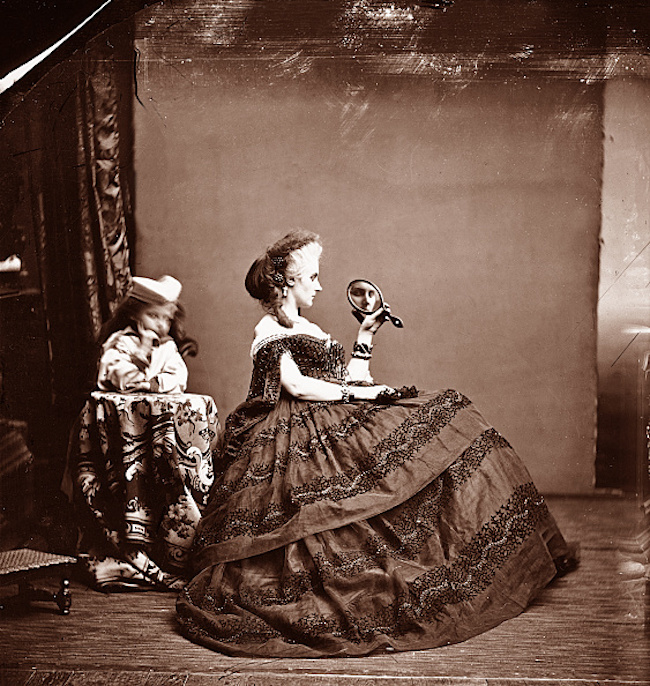
Photo via Getty
In recent years, the Countess has been dubbed everything from “selfie queen” to “supreme narcissist” to Surrealist pioneer. During her lifetime, she was called “a miracle of beauty,” like “Venus descended from Olympus”—but, one of her contemporaries noted, she was so self-absorbed that “after a few moments… she began to get on your nerves.” Another wrote that, at gatherings, she would “allow people to her admire her as if she were a shrine… She almost never spoke to women.”
Writing about herself in third person, the Countess said, “The Eternal Father did not know what he was creating the day he sent her into the world; he modeled and modeled, and when he was finished he looked at his wondrous work and was overwhelmed. He left her in a corner without assigning her a place.”
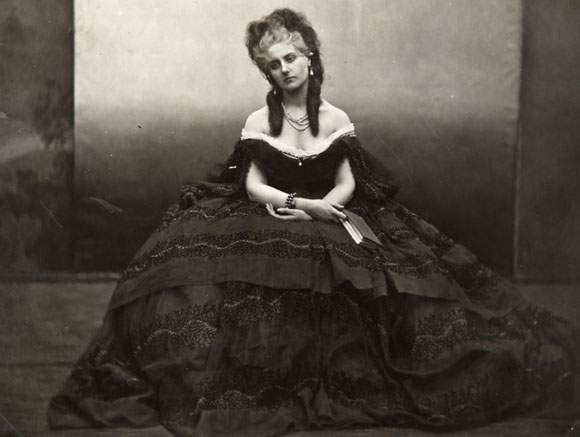
Photo via Wikipedia
The Countess’ story begins in the mid-19th century, when she was married off to an Italian count at age 17. Nearly two years into their marriage, in 1855, she was sent to Paris along with her husband. She had been secretly entrusted with a significant mission: to persuade Emperor Napoleon III into agreeing on the unification of Italy. (Her cousin, the minister Camillo Cavour, reportedly told her to “succeed by any means you wish—but succeed!”) Duly, she ignored the usual diplomatic routes and inveigled herself into prime position as the emperor’s mistress.
It was a short-lived affair, lasting less than a year. But whether the relationship was for business or pleasure, it nonetheless helped the Countess establish an immediate reputation. All eyes were on her whenever she entered a room, and her costumes were the talk of the court. On one occasion, she boldly appeared at a ball on the emperor’s arm, dressed as the Queen of Hearts—prompting the empress to angrily quip, “The heart is a bit low, Madame.”
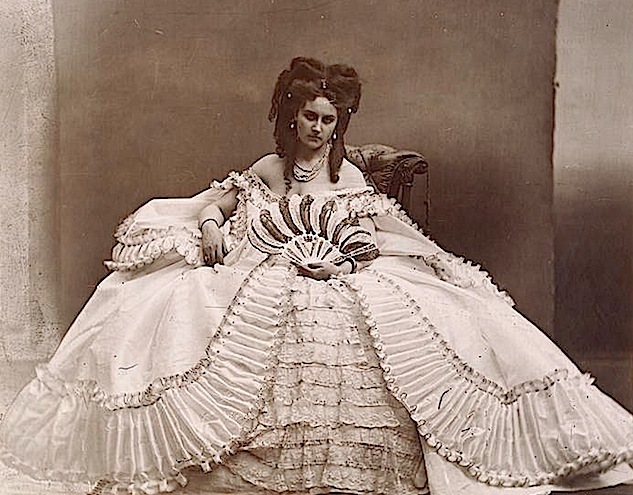
Photo via Wikipedia
In 1857, she separated from her husband, whom she had openly cheated on and bankrupted. “Our separation is irrevocable,” he wrote furiously, returning to Italy alone.
Of all the relationships the Countess formed in Paris, the most significant—and by far most enduring—was her relationship with the camera. Like many other significant society figures, she made her way to the Mayer-Pierson photographic studio on Boulevard de Capucine, which was helmed by imperial court photographer and daguerreotypist Pierre-Louis Pierson. The studio specialized in hand-painted photography, an explosively popular technique. Hand-tinted photographs were regarded as both a luxury and a novelty. Moreover, these rudimentary special effects could smooth, enhance, and flatter their subjects, transforming and elevating them.
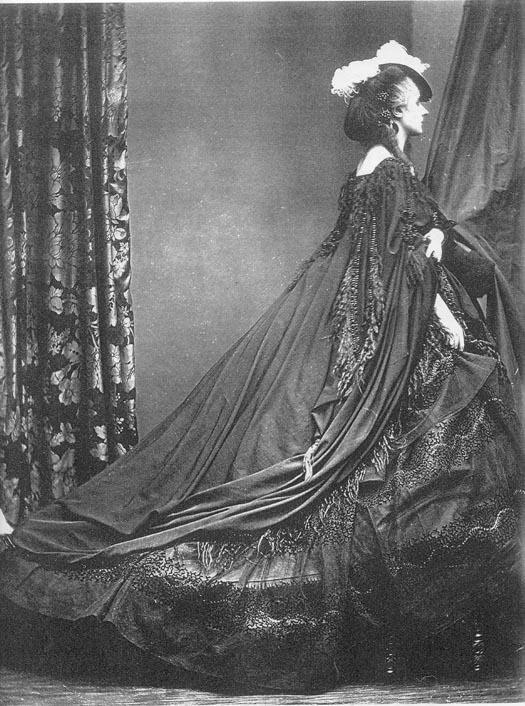
Photo via Wikipedia
After sitting for her first portrait, the Countess returned again and again, working intensively with Pierson from 1856 to 1867, and then again towards the end of her life in the 1890s. Although their relationship was technically collaborative, the Countess held all the cards: meticulously dictating the costumes, the sets, the scenes, and the ways in which images should be painted and embellished afterwards (some were given to the artist Aquilin Schad to overlay with gouache, while others she scribbled on herself).
Most of the images they produced were of specific characters drawn from myth, art, literature, or the Bible, including Lady Macbeth, Anne Boleyn, the queen of Eritrea, Judith before beheading Holofernes, a nun, and even a corpse. She also recreated defining moments of her life, mythologizing her own story by documenting herself in dresses that had proved themselves especially admired or notorious, chief among them being her Queen of Hearts costume.
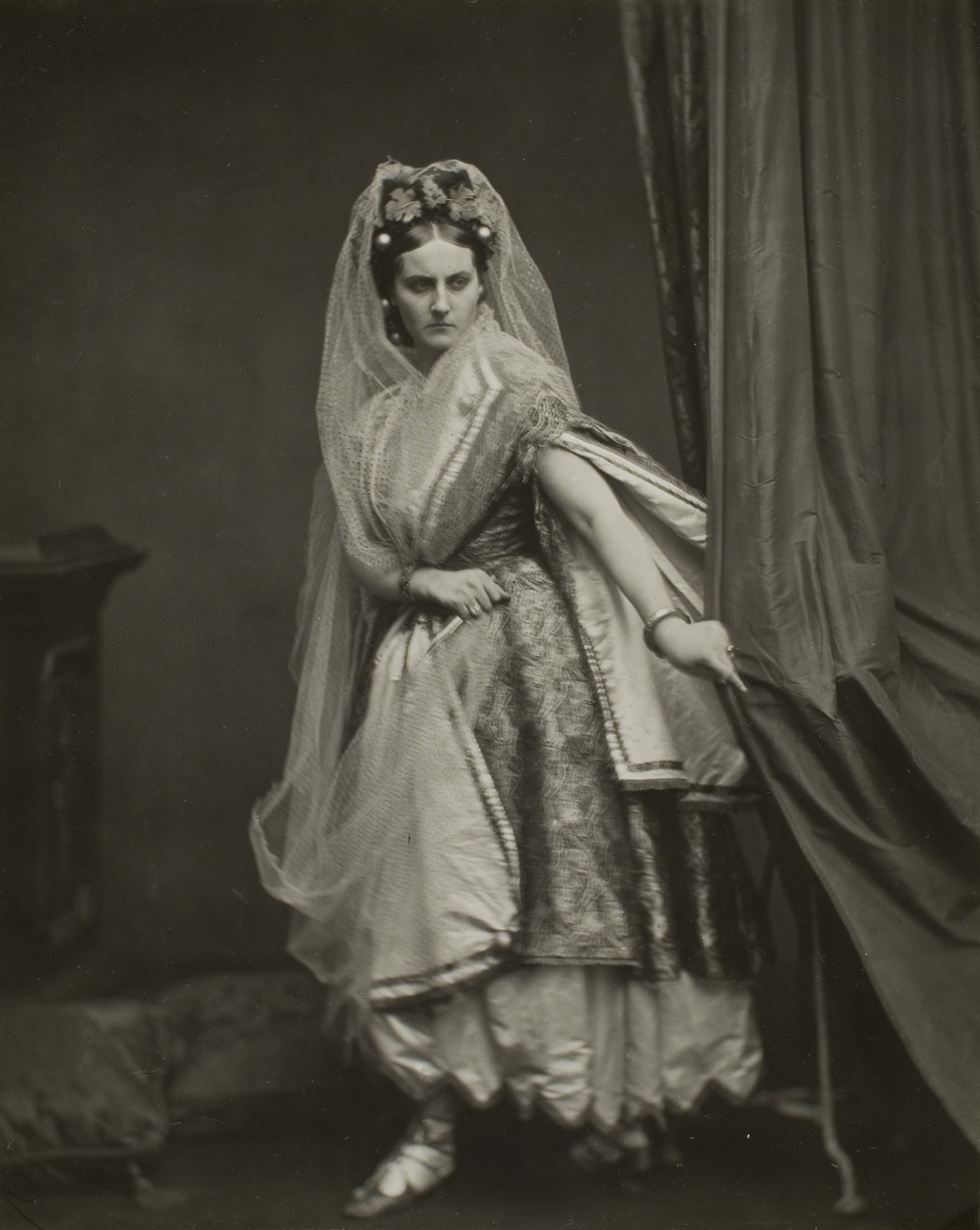
Photo via Wikipedia
It’s hard not to admire the sheer, inventive scope of the imagery, as well as the clothes: all those veils, capes, headpieces, and ornate off-the-shoulder gowns. There are masks and silk robes and, in one photograph, just a bedspread draped suggestively. Some of the images are sumptuous and witty. Others are disquieting. An image of the Countess with long hair and knife in her hand, titled “La Vengeance,” was sent to her estranged husband when he attempted to gain custody of their child.
But as she aged she grew more reclusive, living in a house without mirrors. She rarely left its walls (painted black, of course) during daylight hours. The photo projects continued occasionally. They’d posthumously be described by critics as more morbid, more disturbed, more deranged than her earlier work. At the time of her death, she was in the process of planning a comeback exhibition, a retrospective titled “The Most Beautiful Woman of the Century.”
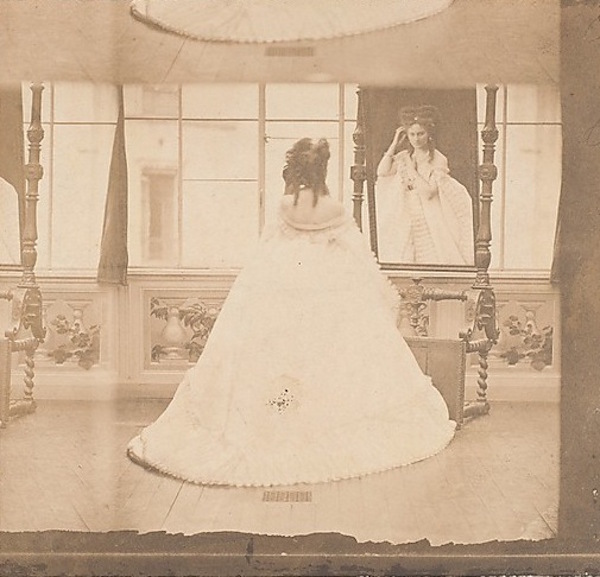
Photo via Wikipedia
In La Divine Comtesse, a book exploring the Countess’ social and cultural legacy, curator Pierre Apraxine writes that art critics have long overlooked the Countess’ body of work, mistakenly considering it trivial. “The Countess, who was perceived as a disturbing character whose motives were unclear, was understood to have taken up photography merely to satisfy her narcissism,” he argues. “Her project, undermined by her shameless self-absorption, could not therefore be regarded as that of a true artist.”
But Apraxine notes that the Countess’ work anticipated several trends in contemporary art and feminist art in particular, prefiguring artists like Cindy Sherman, Claude Cahun, Gillian Wearing, Yasumasa Morimura, and Sophie Calle, all of whom used photography to explore the significance of dressing up, adopting appearances, and manipulating the means of being viewed by others—though Apraxine cautions against viewing the Countess’ work as feminist or a “conscious source of the pictorial innovations to follow.”
For More Stories Like This, Sign Up for Our Newsletter
Strangely, it’s hard to find out much about the impact of Castiglione’s photos during her own lifetime. Some of the portraits were sent out in albums to friends and admirers, often as a signal of her favor. These portraits helped to shape her very deliberate, highly controlled public persona—one that irked plenty of her peers. Others claim that they were largely a private collection—rarely circulated, and never used to commercial ends.
Either way, although she was widely talked about during her life, the portraits were mainly appreciated after her death, feeding into the legend developed by her avid admirers, including Robert de Montesquiou and the similarly eccentric Marchesa Luisa Casati. And that’s how she continues to exist: as an image, a face, a set of poses meticulously choreographed and endlessly marveled over.




